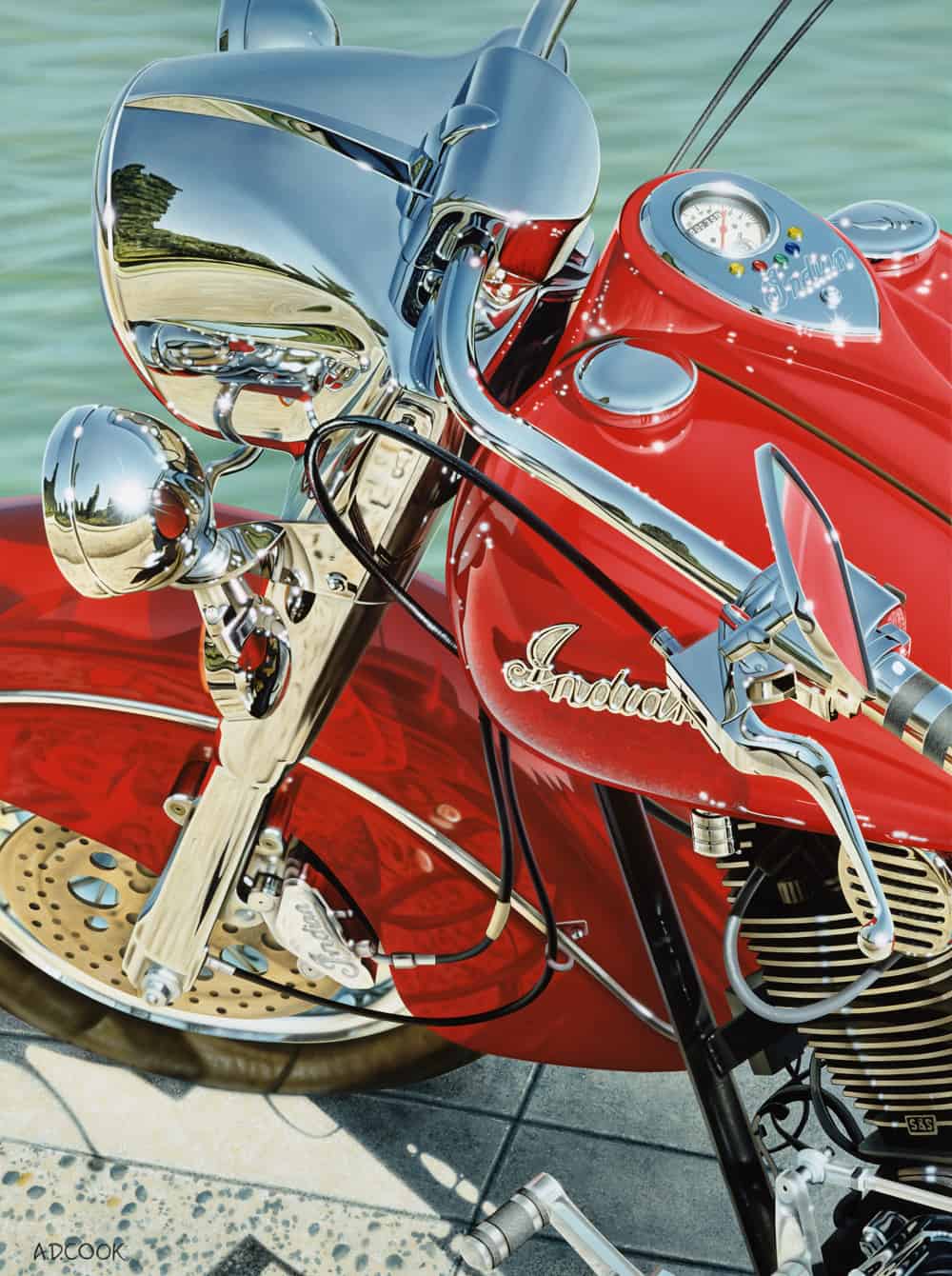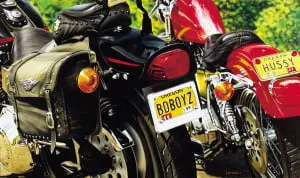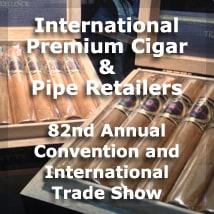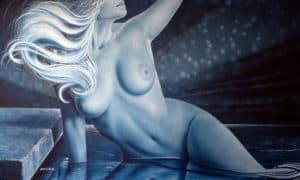I was honored recently to be contacted by art curator, David J. Wagner.
David, it turns out has curated dozens of art shows at major museums throughout the United States, and is putting together an impressive collection of realistic motorcycle art and automotive painting for his upcoming show, LUSTER: Realism and Hyperrealism in Contemporary Automobile and Motorcycle Painting.
With his permission, I’m sharing his program with you. Maybe you like motorcycles. Maybe cars. Maybe art. That’s me. I like them all. So, this excites me, and I’m excited to be included. If it excites you too, pass it on and follow up with Mr. Wagner as to when you can schedule to host his exhibits, or where you can see them. As for me, well, I’m definitely excited…
• • • • •
LUSTER by David J. Wagner, Ph.D.
REALISM AND HYPERREALISM IN CONTEMPORARY AUTOMOBILE AND MOTORCYCLE PAINTING
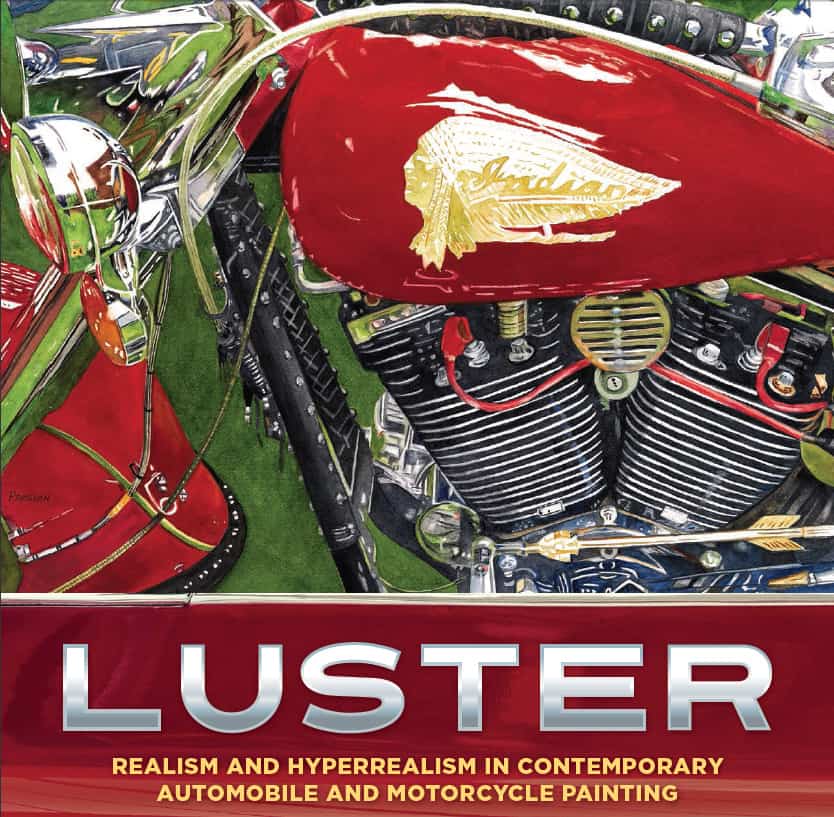
THE BIRTH OF THE MODERN CAR occurred over 150 years ago in 1860 in Germany. The first internal combustion, petroleum-fueled motorcycle came out of Germany 25 years later. In the United States, Henry Ford Company was established in 1901. A year later it morphed into Cadillac Motor Company which Ford left, along with the rights to his name. A new Ford Motor Company emerged in 1903 in Detroit with backing from a dozen investors, including the Dodge brothers. The same year, 1903, Harley-Davidson, was founded in Milwaukee, Wisconsin. Its chief rival was the Indian Motorcycle Co. which emerged out of a bicycle manufacturer in Springfield, Massachusetts in 1901. Much has changed since those early automotive years, but perhaps nothing more so than America’s love affair with cars and motorcycles, which has expressed itself culturally and artistically in so many ways.
THROUGHOUT THE 20TH AND 21ST CENTURIES, cars and motorcycles have not only been ubiquitous on the nation’s streets and highways, and beyond, but also in film, top forty hits, and in painting. With the emergence of Photorealism in the mid and late 1960’s, motor vehicles assumed a special place of distinction as subject matter in the iconography of the first generation of American photorealists notably, Ralph Goings (b. 1928), Richard Estes (b. 1931), Robert Bechtle (b. 1932), Ron Kleemann (1937–2014), Thomas Blackwell (b. 1938), and Don Eddy (b. 1944). In the 1980’s, Peter Maier (b. 1945) magnified their work by painting cars and motorcycles to scale and applying actual automotive paint to canvases of aluminum.
45 paintings in a range of media and size by 15 realists and hyperrealists who specialize in automobiles and motorcycles as their primary subject of choice.
In the 1990s and since, new generations of artists have produced an impressive, collective body of work that has extended photorealist automotive painting and taken it beyond into the realm of what has been called Hyperrealism. Like the automobiles and motorcycles they portray, the paintings of these new-age artists can be characterized by the luster that permeates their work. Chrome ornamentation and trim; reflective side molding, hood and trunk enameled metal and high-performance plastics such as ABS, and before that sometimes wood; glass and rubber; and interior fabrication to meet the needs of purpose-built vehicles of all sorts: these are the surfaces which recent realists and hyperrealists have exploited to generate true, virtuosic masterpieces. But that’s not all; any number of today’s hyperrealists produce reflective views within views; while others contextualize their paintings, with the inclusion of figurative imagery, landscape, and even properties of aging or damage which offer new and interesting visual as well as metaphorical possibilities.
LUSTER: Realism and Hyperrealism in Contemporary Automobile and Motorcycle Painting, is comprised of some 45 paintings in a range of media and size by 15 realists and hyperrealists who specialize in automobiles and motorcycles as their primary subject of choice. A preliminary list of exhibiting artists includes (in alphabetical order): A.D. Cook (Las Vegas, NV), Randy Ford (Eastampton, NJ), Allan Gorman (West Orange, NJ), Marc Jones (Loveland, CO), Cheryl Kelley (Fortuna, CA), Richard Lewis (Marina del Rey, CA), Lory Lockwood (New Orleans, LA), Sheryl Luxenburg (Ottawa, ON, Canada), Robert Petillo (Hardyston, NJ), Kris Preslan (Lake Oswego, OR), Joseph Santos (Buena Park, CA), Ken Scaglia (Weston, CT), Guenevere Schwien (Portland, OR), Brian Tull (Antioch, TN), and Harold Zabady (Camp Hill, PA). Their work embodies the very best of automotive painting being done today. It also encompasses a broad range of car and motorcycle styles and designs from vintage vehicles to classics of the 1950s and ’60s, to the road and tracks racing, off-road vehicles, exotics, and more.
Any number of today’s hyperrealists produce reflective views within views; while others contextualize their paintings, with the inclusion of figurative imagery, landscape, and even properties of aging or damage which offer new and interesting visual as well as metaphorical possibilities.
Changes in American automotive styling escalated in the 1940s after U.S. sales stagnated from market saturation. To maintain growth, Alfred P. Sloan, Jr., long-time General Motors President, Chairman, and CEO suggested that design changes occur annually to convince car owners that they needed to buy a new replacement each year. His concept was heavily promoted in mass media and resulted in a cultural paradigm shift and love affair with modernization. Critics called this “planned obsolescence,” a euphemism with overtones harkening back to Thorstein Veblen’s social critique, The Theory of the Leisure Class (1899), which branded such consumerism as “conspicuous consumption.”
The upshot as far as automotive design was concerned, was that the old open-top runabouts and touring cars were phased out and design elements such as running boards and headlights were gradually integrated into the body of the car. In the 1950s, the industry offered consumers increased horsepower and speed, and more artfully, integrated design which was dramatized in the 1960s with features such as tail fins. With the end of the 20th century, came an end to America’s automobile manufacturing dominance. By then, “The Big Three” (GM, Ford, and Chrysler) had lost ground to imports from Japan as well as other Asian and European countries. In the world of motorcycles, Harley struggled but endured to maintain its autonomy; Indian, however, went bankrupt in 1953, reformed, and went bankrupt several times again.
LUSTER
A preliminary list of exhibiting artists includes (in alphabetical order):
A.D. Cook (Las Vegas, NV)
Randy Ford (Eastampton, NJ)
Allan Gorman (West Orange, NJ)
Marc Jones (Loveland, CO)
Cheryl Kelley (Fortuna, CA)
Richard Lewis (Marina del Rey, CA)
Lory Lockwood (New Orleans, LA)
Sheryl Luxenburg (Ottawa, ON, Canada)
Robert Petillo (Hardyston, NJ)
Kris Preslan (Lake Oswego, OR)
Joseph Santos (Buena Park, CA)
Ken Scaglia (Weston, CT)
Guenevere Schwien (Portland, OR)
Brian Tull (Antioch, TN)
Harold Zabady (Camp Hill, PA)
Clockwise from top left: Guenevere Schwien, Desmo Details, 2014; Cheryl Kelley, Yellow Delahaye, 201 1; Ken Scaglia, Saratoga 300, Chrysler 300 trunk (in Saratoga, NY), 2011; Randy Ford, Type 57 (detail), 2016; Lory Lockwood, All The Pretty Horses, 2007.
Clockwise from top left: Harold Zabady, Lacquer & Chrome, 2006; Sheryl Luxenburg, Double Decker, 2013; Marc Jones, The Car Wash, 2016; Richard Lewis, Buick Hubcap, 201 1; A. D. Cook, Indian Summer, 2000; Joseph Santos, Chevy Bel Air, 2013.
Clockwise from left: Bob Petillo, Frankie’s Root Beer Stand, 2007; Brian Tull, Don’t Bother Missing Me, (detail), 2013; A.D. Cook, Duet, 1999.
EXHIBITION SPECIFICATIONS
CONTENTS: 45 or More Original Paintings in a Range of Size and Realist and Hyper-realist Styles
COST: Mid-range exhibit rental fee plus shipping and in-house and in-transit insurance
AVAILABILITY: Available for the duration of eight weeks; the pro-rated fee for longer durations
SUPPORT: Education, Press, Registration, and Retail
EDUCATION: Lectures, Demonstrations, Workshops possible for a fee and travel-related expenses pending scheduling
FOR ADDITIONAL INFORMATION CONTACT David J. Wagner, Ph.D., Curator/Tour Director David J. Wagner, L.L.C.
OFFICE: 414.221.6878
EMAIL: [email protected]
WEBSITE: davidjwagnerllc.com
Member: American Alliance of Museums and International Council of Museums
Photos of artworks in this prospectus are intended to convey the quality, diversity, and direction of LUSTER, but not final selections for the exhibition since it is in production.
Download LUSTER Prospectus ~ PDF [2.8Mb]
• • • • •
STURGIS RALLY 2016 | MOTORCYCLE PAINTINGS | AMERICA
- About the Author
- Latest Posts
- More info
A.D. is an artist who started drawing at a young age. Throughout his life, he has worked with different creative tools in traditional and digital art and design. His art and writings have been showcased in various publications such as Airbrush Action Magazine, Airbrush Magazine, American Art Collector, Art & Beyond, Dream To Launch, Easyriders, Las Vegas City Life, Las Vegas Weekly, L’Vegue, ModelsMania, Quick Throttle, and The Ultimate Airbrush Handbook.

